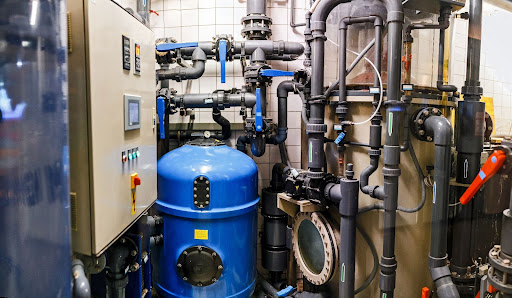
Proper boiler sizing is the key to a successful boiler installation. Even if the installation process goes smoothly, if the boiler was not properly sized for the facility it’s supplying, then the project won’t be as successful as it should have been. Learn how to properly size your facility’s boiler system to ensure your boiler installation is a success.
Why Is Boiler Sizing Important?
Whether undersized or oversized, selecting the wrong boiler will harm efficiency, reliability, and the ability to satisfy the facility’s demands. When a boiler is too big or too small, either efficiency and reliability are sacrificed, or the demands from the facility will be too great for the boiler system.
Related: How to Install Boilers
Steam vs. Hot Water Boilers
When talking about boilers, one major distinction is whether the boiler produces hot water or steam. Steam boilers must handle not only higher temperatures, but higher pressures as well. The distribution networks for hot water and steam are also very different, so knowing what your facility will require is a crucial first step. There are other distinctions to make, such as comparing watertube and firetube boilers, as well as high condensing boilers versus non-condensing boilers. Another factor to be mindful of is LEED certification and energy efficiency. Consider, for example, that high-efficiency hot water condensing boilers aid in getting a building or facility LEED-certified and have much higher energy savings than steam boilers.
Undersizing and Oversizing Systems
The majority of boilers in use are oversized - the penalty for oversizing is less apparent than the penalty for undersizing. An oversized boiler will constantly cycle on and off, because it is more powerful than the application requires. The effects of oversizing are lower-than-expected efficiencies (due to higher fuel prices) and more thermal fatigue on the boiler, which will wear components out faster. Oversized boilers wear out faster than their properly sized counterparts.
Undersized boilers are often much more apparent: they simply do not produce enough steam or hot water for your facility. The effects of this are often felt when the facility is not heating up as fast as it should, or when processes don’t have the required temperature steam or hot water getting to them. Undersized boilers must be supplemented with additional equipment in order to satisfy the facility’s requirements.
How to Size a Boiler
Now that you know why proper boiler sizing is important, what calculations do you need to make in order to ensure that the boiler is sized correctly? Many of the parameters needed when sizing a boiler are the same whether the boiler is hot water or steam:
- Operating Pressure
- Fuel Input
- Redundancy Requirements
- Hours of Operation
Steam and hot water boilers do have parameters that are specific to those types of boilers. For steam boilers, the other key parameters are:
- Min/Avg/Max load in pounds per hour of steam
For hot water:
- Type of fluid (domestic water, hydronic water, glycol mix)
- Min/Avg/Max load in btu/hr
- Min/Avg/Max return water temp
- Min/Avg/Max supply water temp
Determining the Load for Your Boiler
How well you are able to calculate your facility’s load will determine how well the new boiler will be sized for your facility. The first characteristic to look at is how your facility will use hot water or steam. Will the facility use the boiler to serve one part of a manufacturing process, or to provide heating for the entire building? Is the piping system already in place? If so, are there flow rate or pressure restrictions that need to be considered when determining how the boiler will operate?
Once you know where the steam or hot water will be used in your facility, you need to look at how long the steam or hot water will be used. If the hot water is being used for space heating, will the boiler run at max capacity for a few hours a year, and then sit idle for a few months? If the system is supplying a manufacturing process, will the load be fairly consistent over time? Knowing how much, and for how long, your facility will need output from the boiler will give you a much better understanding of which boiler will best suit your needs.
Physically Sizing the Boiler
Often the last step in sizing a boiler is making sure it will actually fit in your facility. You may have found the perfect boiler from an efficiency and output standpoint, but if it is too big to fit in the mechanical room where you need to put it, it just won’t work without some modifications. When you begin sizing your boiler, take a look at the space where it’s planning on going. How much room is there, physically, to access the boiler once it is installed? If that space ends up being too small, would it be possible to relocate the boiler elsewhere?
Sizing a boiler may seem tricky, but getting it right is crucial to an efficient, reliable facility. The experts at Tate are ready to help with any of your boiler needs. Reach out today to see how we can help with your next boiler replacement.
